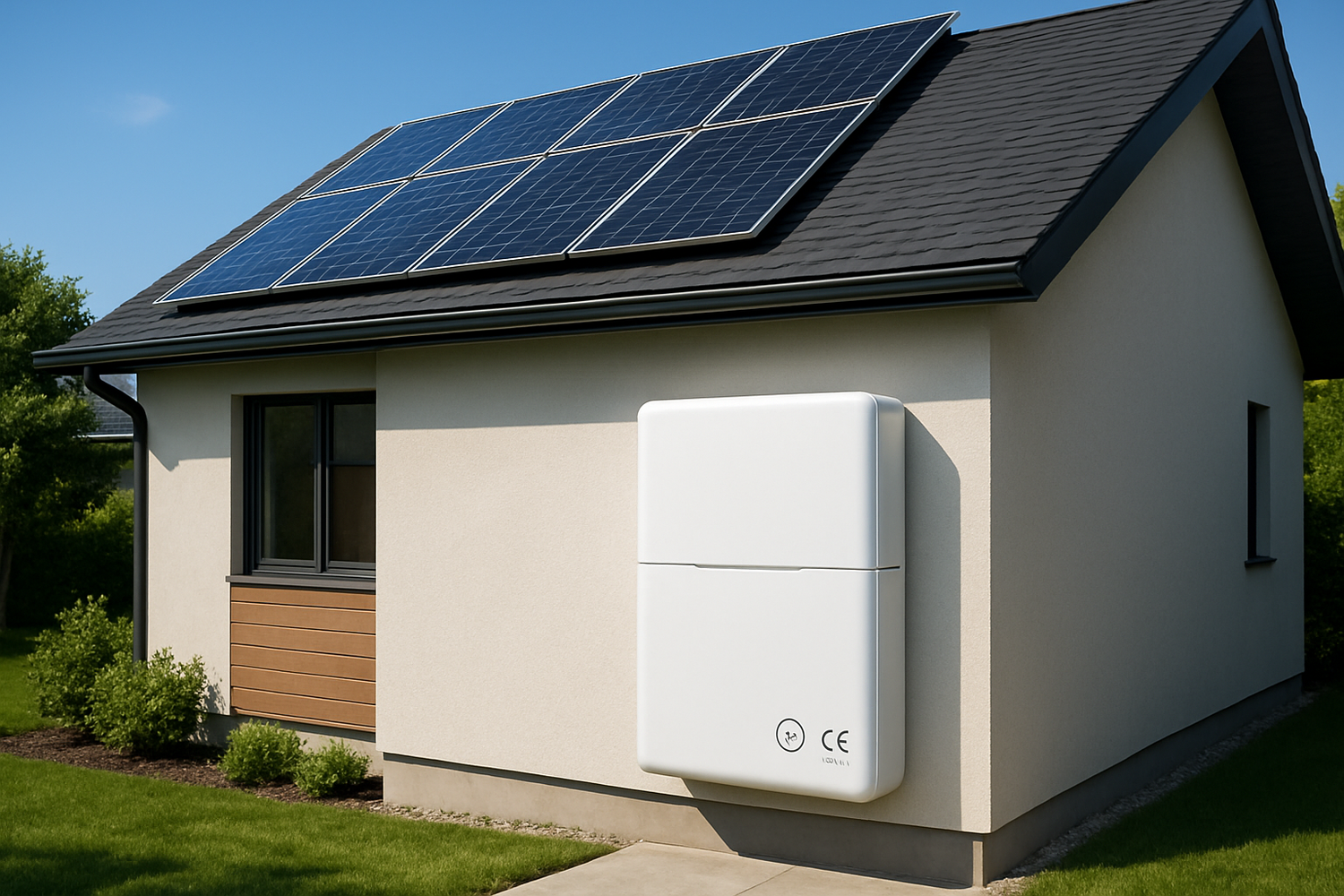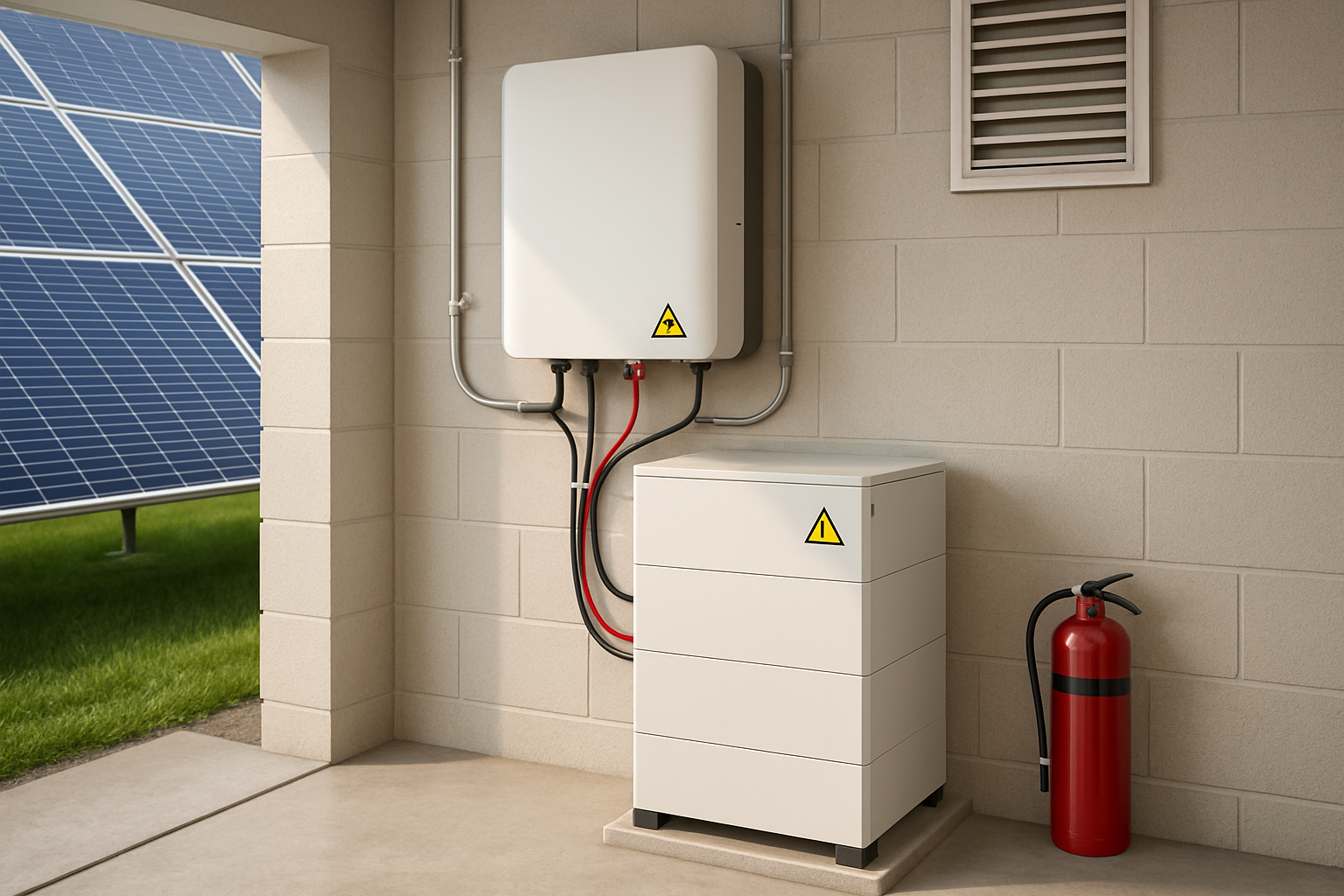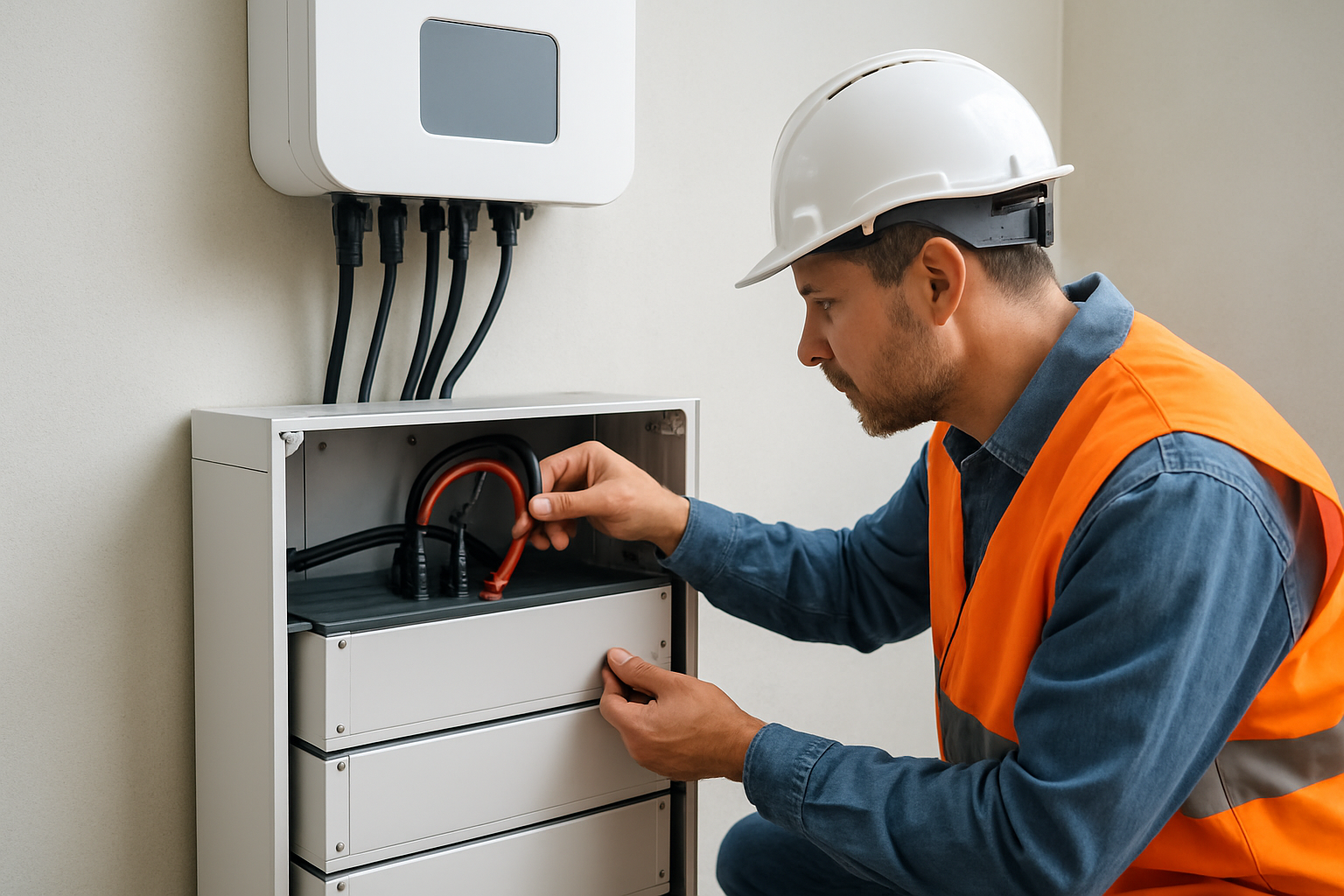As more homeowners embrace solar energy, the conversation around home battery storage grows. These systems offer significant benefits, providing reliable backup power and increasing energy independence. However, a common concern often arises: do home batteries frequently catch fire? This article addresses that concern directly, separating common misconceptions from the factual safety record of modern home battery systems.
Understanding Home Battery Technology and Safety
Home energy storage systems are complex pieces of technology, designed with multiple layers of safety. Understanding the core components and the standards governing them helps clarify their safety profile.
The Fundamentals of Lithium Iron Phosphate (LiFePO4) Batteries
Many advanced home battery systems, including our own, utilize Lithium Iron Phosphate (LiFePO4 or LFP) chemistry. This specific type of lithium-ion battery stands out due to its inherent safety features. Unlike some other lithium-ion chemistries, LiFePO4 batteries are known for their exceptional thermal stability. The strong covalent bonds between iron, phosphorus, and oxygen in the cathode material significantly reduce risks such as overheating and thermal runaway.
LiFePO4 batteries are less prone to dramatic failures like fires or explosions, even when subjected to hazardous events such as collision or short-circuiting. They also use a non-flammable electrolyte, which further minimizes fire risk. This stable chemical composition and robust design make LiFePO4 batteries a highly reliable and safe choice for residential energy storage.
Our commitment to reliable and scalable energy solutions is rooted in our focus on LiFePO4 battery manufacturing. We ensure our residential energy storage systems integrate these high-performance, safe, and dependable batteries, alongside hybrid inverters and solar panels, to deliver complete energy independence.
Safety Standards and Regulations
The home battery industry adheres to stringent safety standards and regulations. These standards are developed by reputable organizations and aim to ensure the safe design, manufacturing, installation, and operation of battery systems. Compliance with certifications like UL and IEC is crucial. These certifications mean a product has undergone rigorous testing for electrical safety, fire containment, and overall reliability. When you choose a certified system, you are selecting a product designed to meet high safety benchmarks.
Assessing the Risk: Fire Incidents in Perspective
While any electrical appliance carries some degree of risk, the probability of a home battery system causing a fire is remarkably low, especially when compared to other common household items or general house fires. Public perception can sometimes be swayed by isolated incidents, but data paints a different picture.
Analyzing Incident Data
Recent research from Germany indicates that the probability of a fire hitting a home storage system (HSS) is significantly lower than a general house fire. Specifically, it is 50 times lower than a general house fire and 18 times lower than internal combustion engines (ICEs). The probability of an HSS fire per year was calculated at 0.005%, which is approximately the same level as a fire in a tumble dryer (0.0037%). While residential battery energy storage systems are still a relatively new technology, these statistics suggest a low incidence rate for fires directly caused by them. For example, in New South Wales, Australia, only 3 fires were caused by residential battery energy storage systems (R-BESS) in 2023, and only 1 in 2022. This indicates that total home battery system fires accounted for a very small percentage of lithium fires in that period.
It is important to note that many reported lithium-ion battery fires are linked to micromobility devices (e.g., e-bikes, e-scooters) or other personal electronics, often involving unknown brands, tampering, or improper charging, rather than professionally installed home energy storage systems. This distinction is vital when considering the overall safety of home batteries.
The Role of Quality Manufacturing and Installation
The safety of a home battery system depends heavily on two critical factors: the quality of its manufacturing and the expertise of its installation. Reputable manufacturers, like our company, utilize high-quality materials and rigorous testing processes. Our focus on lithium battery manufacturing and integrated ESS development means we build systems designed for durability and safety.
Professional installation by certified experts is equally important. Installers understand local building codes and regulations, ensuring the battery unit is placed in an appropriate location with adequate ventilation and safely connected to your home's electrical system. Improper installation, such as incorrect wiring or inadequate ventilation, can lead to potential hazards. Choosing a comprehensive solution that includes professional installation significantly minimizes risks and maximizes the system's performance and safety.

Mitigating Risks: Best Practices for Home Battery Safety
While home battery systems are inherently safe when properly designed and installed, proactive measures further enhance safety and ensure long-term reliability.
Proper Installation and Maintenance
Selecting the right location for your battery system is fundamental. It should be dry, dust-free, well-ventilated, and away from flammable substances or heat sources. Avoid installing batteries in habitable rooms. Ensure there is enough space around the unit for access and ventilation, and do not store anything on top of the battery.
Regular maintenance is also key. Periodically check your battery for dirt, debris, or insect infestation. Follow the manufacturer's guidelines for cleaning and servicing. Servicing by an accredited installer is often recommended to ensure optimal performance and address any potential issues.
Advanced Battery Management Systems (BMS)
A sophisticated Battery Management System (BMS) is a cornerstone of modern battery safety. This integrated system continuously monitors and controls critical parameters such as voltage, current, and temperature. A robust BMS prevents issues like overcharging, over-discharging, short-circuiting, and cell imbalances, all of which can compromise safety and battery lifespan. Our integrated energy storage systems feature advanced BMS capabilities, ensuring the battery operates within safe limits and provides optimal performance.
Emergency Preparedness
Having a fire safety plan in place is a smart practice for any home. Know the location of fire extinguishers and emergency contact details. While home battery fires are rare, being prepared is always prudent. Ensure fire extinguishers suitable for electrical fires (Class C or ABC) are accessible near the battery installation. If you detect any unusual smells, sounds, or visual anomalies from your battery system, contact your installer or emergency services immediately.
The Future of Home Energy Storage: Reliability and Innovation
The solar and energy storage industry is experiencing significant growth, driven by technological advancements and increasing demand for sustainable energy solutions. This growth underscores the confidence in the safety and effectiveness of these technologies.
Growing Investment in Battery Storage
Investment in battery storage is rapidly accelerating globally. In 2022, expenditure on battery storage exceeded USD 20 billion. The United States, China, and Europe accounted for 90% of this spending. The International Energy Agency (IEA) estimated that global investment in battery storage would nearly double to USD 38 billion in 2023. This significant investment highlights the industry's commitment to developing and deploying safe, efficient, and reliable energy storage solutions. China, for instance, saw its spending on battery storage triple in 2022 to almost USD 8 billion, with projections to reach USD 14 billion in 2023. The United States also expects battery storage investments to more than double to USD 13 billion in 2023.
This table illustrates the substantial growth in battery storage investment across key regions:
| Region | Battery Storage Investment (2022, USD Billion) | Projected Investment (2023, USD Billion) |
|---|---|---|
| China | ~8 | ~14 |
| United States | ~6 | ~13 |
| Europe | ~5 | (Not explicitly stated for 2023, but strong growth noted) |
| OECD Pacific | ~1 | (Not explicitly stated for 2023, but strong growth noted) |
| Asia Pacific (excluding China) | >1 | ~3 (expected to triple) |
| Global Total | >20 | ~38 |
The continuous rise in investment, particularly in utility-scale and behind-the-meter battery systems, demonstrates a strong market confidence in the safety and long-term viability of this technology.
Our Commitment to Safe and Sustainable Energy
With years of experience in the solar energy sector, we are dedicated to providing reliable and scalable energy solutions. Our core expertise lies in manufacturing high-quality LiFePO4 batteries, developing comprehensive energy storage systems, and offering integrated off-grid solar solutions for diverse applications, including homes, farms, and remote cabins. We also provide advanced solar inverters that efficiently convert DC power to AC for your home's needs.
Our commitment extends beyond products; we aim to empower our customers to achieve true energy independence through safe, efficient, and durable energy systems. This includes rigorous quality control and a focus on customer education regarding safe operation and maintenance.
A Reliable Path to Energy Independence
The idea that home batteries commonly catch fire is a misconception. Modern home battery systems, particularly those utilizing LiFePO4 technology, are designed with multiple safety features and adhere to strict industry standards. While no electrical system is entirely risk-free, the probability of a fire incident involving a properly manufactured and professionally installed home battery is extremely low.
By choosing high-quality products, ensuring expert installation, and following recommended safety and maintenance practices, you can confidently embrace home energy storage. You will gain the benefits of energy independence, reliable power, and a more sustainable lifestyle, knowing your system operates with a strong emphasis on safety.
Disclaimer: This article provides general information for educational purposes and should not be considered legal or investment advice. Always consult with qualified professionals for specific recommendations regarding your energy system, financial planning, or legal matters.





Leave a comment
All comments are moderated before being published.
This site is protected by hCaptcha and the hCaptcha Privacy Policy and Terms of Service apply.